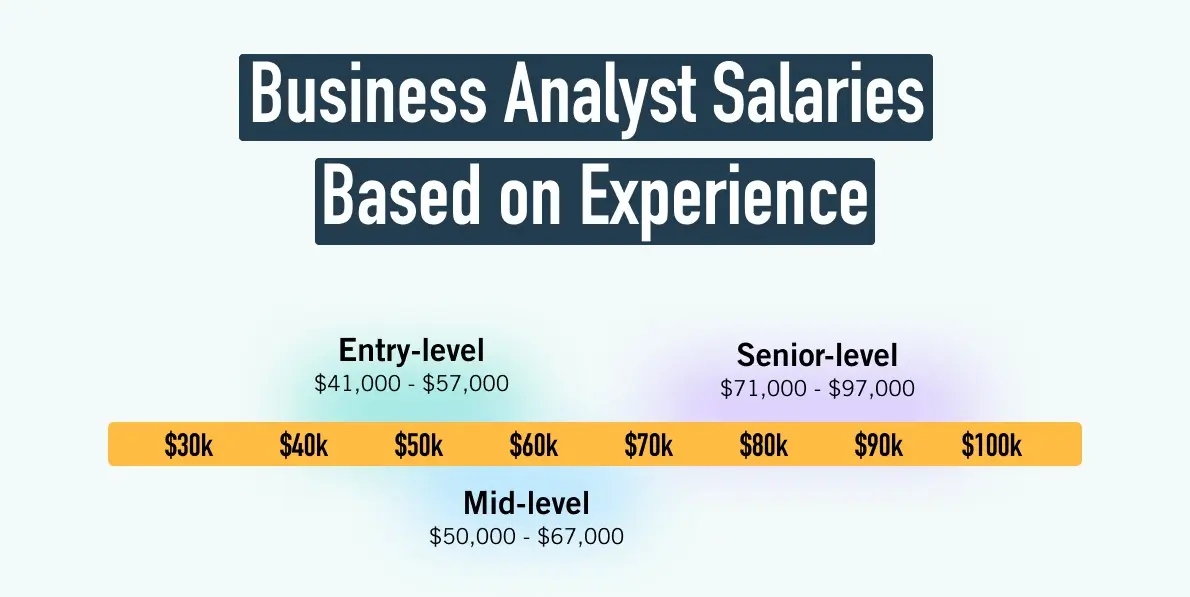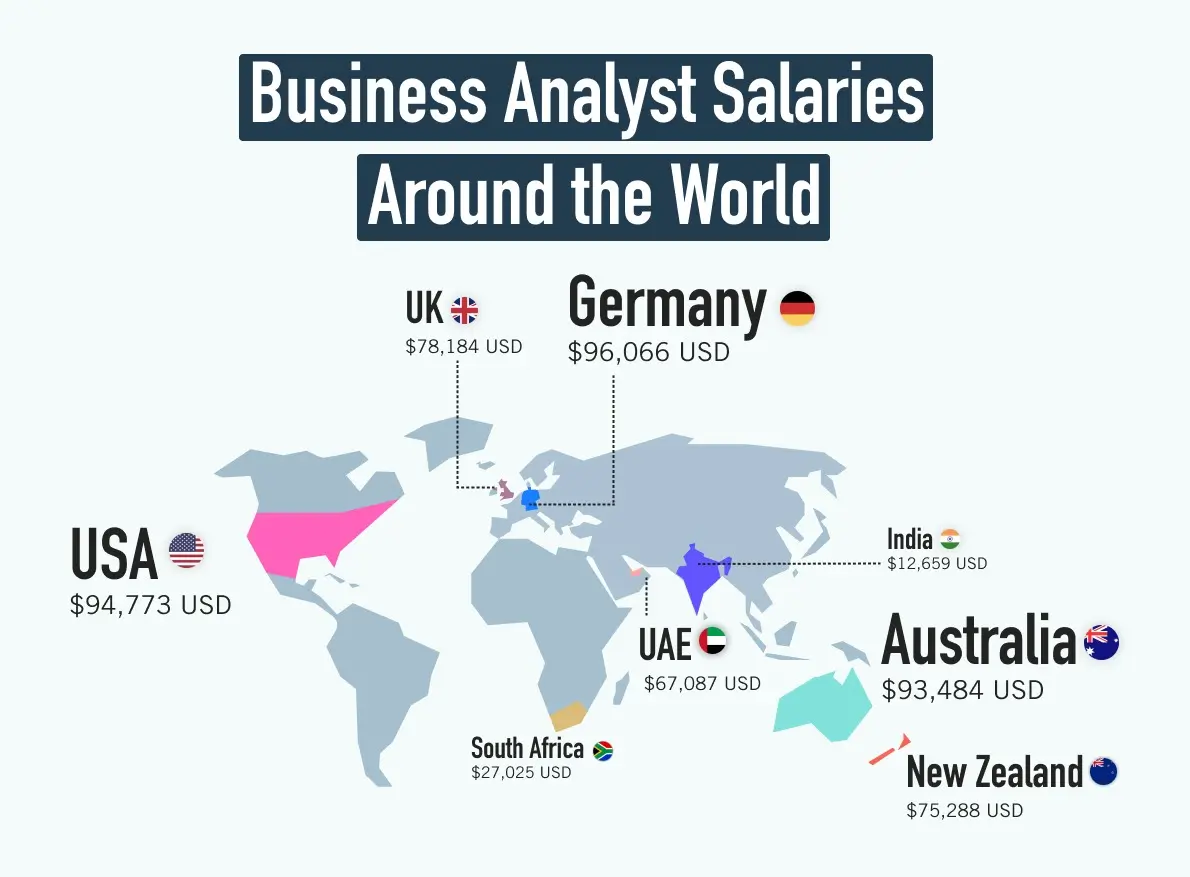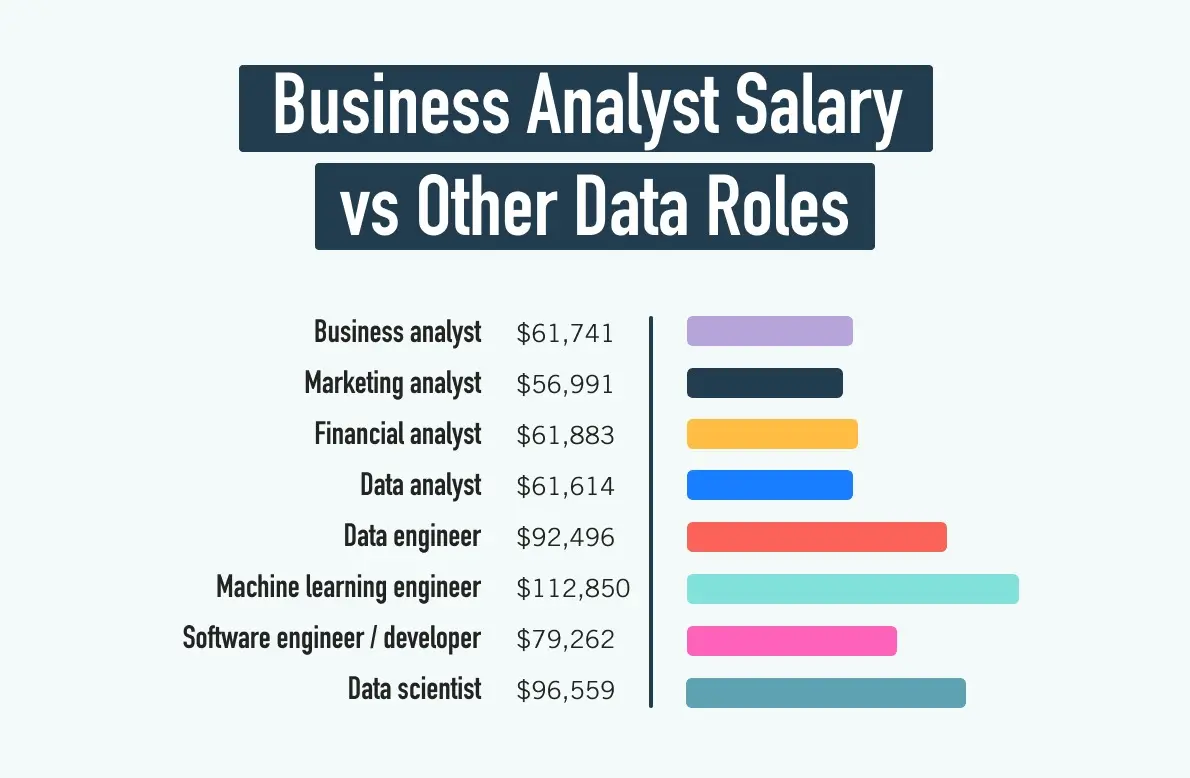What is the typical business analyst salary? What factors impact how much they can earn? Find all the answers in this guide.
Unless you’ve been living under a rock, you’ll know that data jobs are all the rage right now. From data analysts and engineers to Python developers and machine learning architects, there are tons of data-related roles. While all these jobs share some core skills, they also sit on a sliding scale of expertise and responsibility, all of which impact how much you can earn.
One key data role is the business analyst. Business analysts are important because they review an organization’s processes and procedures to ensure that it is making effective (and financially savvy) decisions. They usually make recommendations for improving how operations are run, integrating new processes and an organization’s IT systems.
As companies strive to maintain a competitive edge, business analysts are fast becoming a must-have, not a nice-to-have. If you want to learn the basics of data analytics before specializing your skills, becoming a business analyst can also be a good place to start.
In this post, we explore the average business analyst salary in relation to various factors. Use the clickable menu to jump to the topic of your choice:
- What is the average business analyst salary?
- Business analyst salary based on experience
- Business analyst salary based on location
- Business analyst salary compared to other data roles
- Further reading
A couple of caveats: in general, we’ll use U.S. dollars throughout. We’ve also collected data from several different salary comparison sites. Since these sites regularly update their estimates, be sure to click on the links to get the most up-to-date info!
Now, are you ready? Then let’s find out what kind of salary a business analyst can earn!
1. What is the average business analyst salary?
Numerous factors will influence how much you can earn as a business analyst. These range from your experience working with data, your level of business or domain expertise, as well as more practical issues like your location.
We’ve deduced that the the average business analyst salary in the U.S. is around $85,400.
To give you this estimate, we’ve taken data from numerous salary comparison sites, including Glassdoor, Indeed, salary.com, Salary Expert, and Payscale.
- Glassdoor: $93,186
- Indeed: $84,377
- Salary.com: $82,903
- Payscale: $67,246
- Salary Expert: $99,701
Bear in mind, that’s not even taking into account cash bonuses and other potential job perks… so not too bad! Naturally, though, this estimate is a broad average and doesn’t consider factors like experience and location. So let’s explore these next.
2. Business analyst salary based on experience

If you’re an experienced businessperson with a history of working in commercial roles (whether sales, IT, or management) a step into business analytics may be a natural step. Even without extensive data analytics experience, your unique insights into the way that organizations run will give you an edge, likely leading to a higher salary.
Likewise, for those with a solid data background, such as software engineers or IT managers, you can expect to earn more in an entry-level role.
In this section, we explore the average salaries of business analysts with varying degrees of experience under their belt. Payscale tends to offer fairly conservative salary estimates, so we’ll stick with them for that reason. Better to undersell than oversell! Just be aware that you may be able to go higher than these estimates if you’re currently in the midst of salary negotiations.
Entry-level business analyst salaries
To land an entry-level role, you don’t necessarily need commercial experience or even a lot of proven expertise working with data. However, at the very least, you will need an undergraduate degree.
If this degree is not data or statistics related, you’ll likely need a certification to prove that you have fundamental data analytics skills, e.g. knowledge of Python, SQL, advanced Excel skills, basic statistical knowledge, and perhaps some understanding of common enterprise IT systems.
Payscale’s data suggests that entry-level business analysts in the US can earn from about $44,000 to about $80,000. Based on the estimates in our previous section, that might not sound like much. However, to put this in context, this is still above the average U.S. salary (which was roughly $53,490 in Dec 2023).
At this stage, you’ll likely be getting to grips with skills like big data analytics and Python, as well as honing your presentation skills. You’ll also be improving your project management expertise and learning how to become an advocate for change within your organization.
Mid-career business analyst salaries
According to Payscale, a mid-career business analyst in the U.S. can earn from around $52,000 to an average of about $101,000. At this stage in your career, you’ll be confident carrying out various data-related activities, with a solid knowledge of data engineering and tools like machine learning algorithms.
On the business side of things, you’ll also be further developing your communication skills, not to mention incorporating strategic planning and financial modeling into your work. You should also be getting more hands-on with the practical aspects of process engineering.
Of course, the specifics always depend on the job description itself. But at this stage, you should hopefully find that you’re starting to carve out your own responsibilities based on your interests and strengths.
Experienced business analyst salaries
Finally, Payscale suggests that an experienced business analyst in the U.S. can earn from an average of about $53,000 up to $110,000. Bearing in mind that these are conservative estimates, you could potentially earn even more.
At this point, you’ll have more than five years of experience and will, realistically, be considering a move into another data-related area, either by specializing your focus on a particular business domain (such as IT or finance) or by taking a sideways step into another data role, such as data science. The earning potential there is even higher. You can find out how much a data scientist earns in this article.
3. Business analyst salary based on geographic location

So far, we’ve focused on the average business analyst salary in the United States. But we live in a global world! What if you want to work for a company elsewhere? Even though remote working is now the norm, your salary will largely be dictated by the physical location of the organization you work for.
In this section, we list a number of countries from around the world by their average business analyst salary. This time, we’ve drawn on global data from Salary Expert. Their estimates are a bit higher than those from Payscale, so we’ve included the U.S. average salary again so that it’s easier to make a clear comparison:
- United States: $99,701
- Germany: $89,972 (or €84,530)
- Australia: $86,308 (or $128,711 AUD)
- United Kingdom: $70,619 (or £57,825)
- New Zealand: $71,516 (or $112,713 NZD)
- United Arab Emirates: $69,150 (or 253,995 AED)
- South Africa: $28,196 (or R492,650)
- India: $18,160 (or 15,06,959INR)
As is often the case with data jobs, the United States offers some of the most competitive salaries in the world. Germany and Australia come close behind. And while there appears to be a drastic drop after that, it’s important to consider the cost of living.
Countries like Germany, the U.S., and Australia cost more in real terms, meaning that a lower salary in a country like South Africa may look bad, but could actually go further. So don’t be put off the idea of relocating based on salary data alone!
What other factors can impact your earning potential? Let’s find out.
4. Business analyst salaries versus other data-related jobs

While it’s sometimes helpful to split data-related jobs into discrete categories, the truth is that the boundaries between them are not always clear-cut. Despite having different responsibilities, each type of data-related job also shares some core data analytics skills.
A data engineer, for example, will rely more on software development skills than, say, a pure data analyst, who might have a more statistical focus. Meanwhile, a data scientist will generally have a higher level qualification (often a Ph.D.) with an all-around understanding of statistics, data modeling, machine learning, corporate management, and so on.
Fortunately, transitioning from one role to another is not as hard as you might think. If you want to step into a different role, you’ll find numerous ways of doing so. In this section, we compare salaries for different data roles in the U.S., based, once again, on data taken from Payscale:
- Business analyst: $67,149
- Marketing analyst: $59,295
- Financial analyst: $64,446
- Data analyst: $64,678
- Data engineer: $94,262
- Machine learning engineer: $113,290
- Software engineer / developer: $84,114
- Data scientist: $98,321
As you can see, ‘pure’ analytics roles, i.e. those focusing on specific domain areas like marketing or finance, earn comparable salaries. However, once you’ve mastered the basics, you could consider stepping into a more complex data science or engineering role. If so, your salary will certainly increase.
Of course, we must take these estimates with a pinch of salt, too. These are all based on specific job titles rather than the responsibilities of the role. But they do offer an idea of the spread of how much you can earn.
5. Wrap-up and further reading
In this post, we’ve explored the average business analyst salary across the US and globally. As we’ve seen, your job title, past corporate experience, level of data analytics skills, and even location will impact how much you can earn.
While this makes it hard to give a single figure, we’ve shown that business analysts are generally well sought-after and that they usually earn far above the U.S. national average.
If you’re fascinated by systems and process design, like the challenge of selling complex ideas to various stakeholders, and love communicating with different teams, a career as a business analyst could be the one for you.
You can start with a free introductory data analytics short course, and follow this guide on how to become a business analyst.
Want to learn more about forging a career in data? Check out the following:
